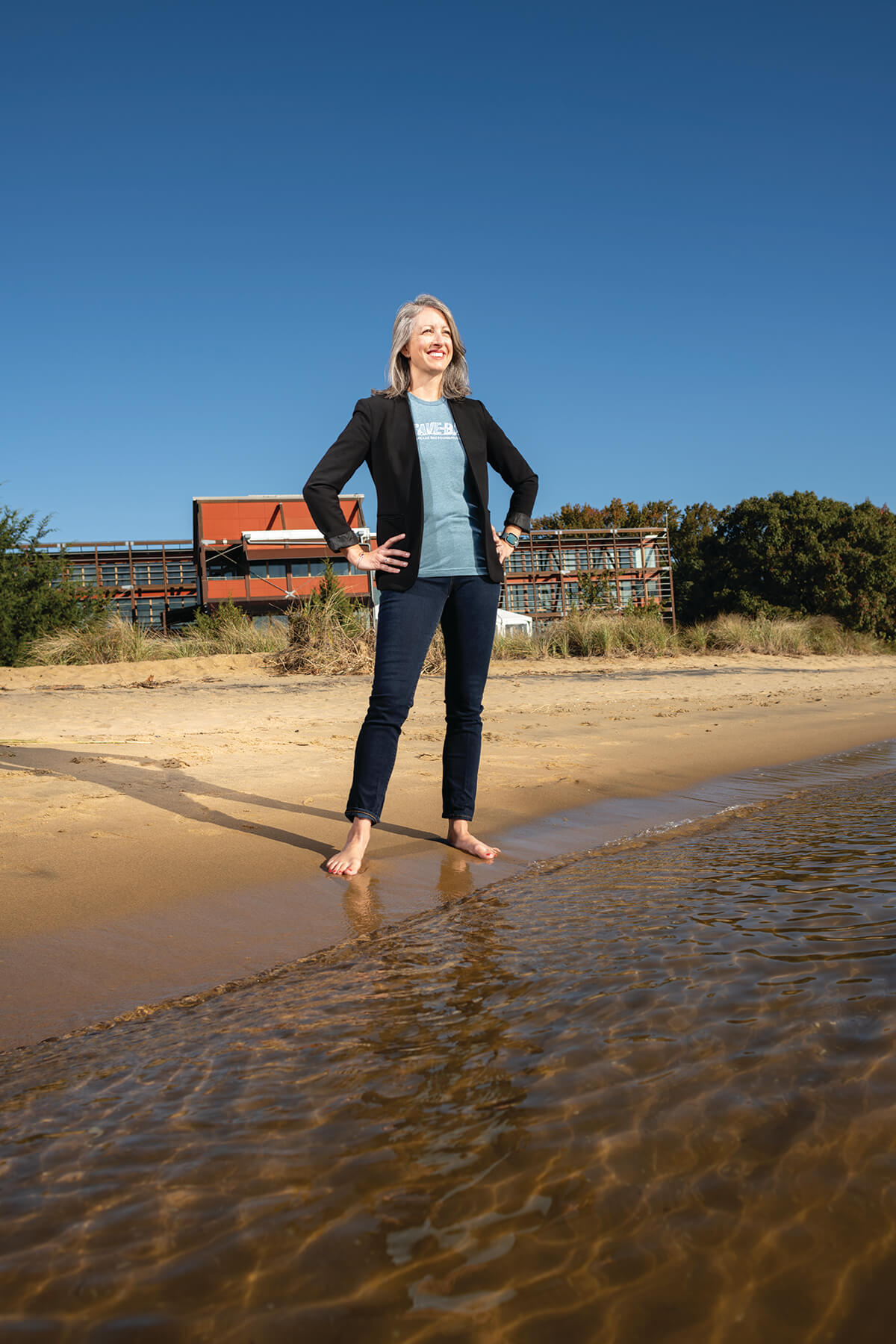GameChangers
Hilary Harp Falk Takes a People-Focused Approach to Protecting the Chesapeake Bay
As a longtime champion of environmental equity, the president of the Chesapeake Bay Foundation is redefining how the organization preserves and restores the nation’s largest estuary.

Hilary Harp Falk has been immersed in the Chesapeake Bay all of her life. The daughter of famed former Sun photographer Dave Harp, the 44-year-old North Baltimore native spent her formative years exploring the Bay’s waterways, later landing her first job as an intern for the Chesapeake Bay Foundation (CBF). In January 2022, Falk was hired as the president of CBF and, as a longtime champion of environmental equity, her people-focused leadership is helping to redefine how the organization preserves, protects, and restores the nation’s largest estuary
What are some of your formative memories of the Chesapeake Bay?
My dad was working on some stories with author Tom Horton and would take me with him down to Smith Island. Tom would let me drive his boat, and my sister and I would go chicken-necking [for crabs] off the Chesapeake Bay Foundation dock. I just thought it was one of the most magical places I’d ever seen…and one that really spoke to me about the connection between people and the Bay. I also spent my childhood in Baltimore, learning about how the city had an impact on the harbor and the Bay. I stenciled stormwater drains, learned about recycling, and took part in all of these environmental activities that were gaining traction in people’s consciousness.
CBF was started in 1967 with the now well-known motto, “Save the Bay.” What does that mean today?
I stand on the shoulders of some incredible leaders who started the modern Chesapeake Bay movement. But we’re in a different time, with a significant amount of generational change. So much of the Bay movement has been looking back—historical data and so on. But I am really energized by the opportunity to bring people together to re-envision the future of the Bay movement with forward-facing goals—getting clean water closer to people, confronting challenges like the climate crisis.
You’ve been a champion of equity in the conservation movement throughout your career, which includes a long tenure at the National Wildlife Federation. How is that informing your leadership at CBF?
I think we can acknowledge that the Bay movement has left people out. Communities have been left behind. So a lot of our work now is about the nexus between people, environmental justice, and clean water. Some of that work is through the lens of litigation, like addressing legacy pollution at Sparrows Point. Some of that, like the Great Baltimore Oyster Partnership, is by supporting initiatives that allow new voices to be included. We still have a long way to go. But we’ll continue to collaborate with leaders and communities from Cooperstown, NY, to Virginia Beach to make sure clean, fishable, swimmable water is something we all get to enjoy throughout the watershed.